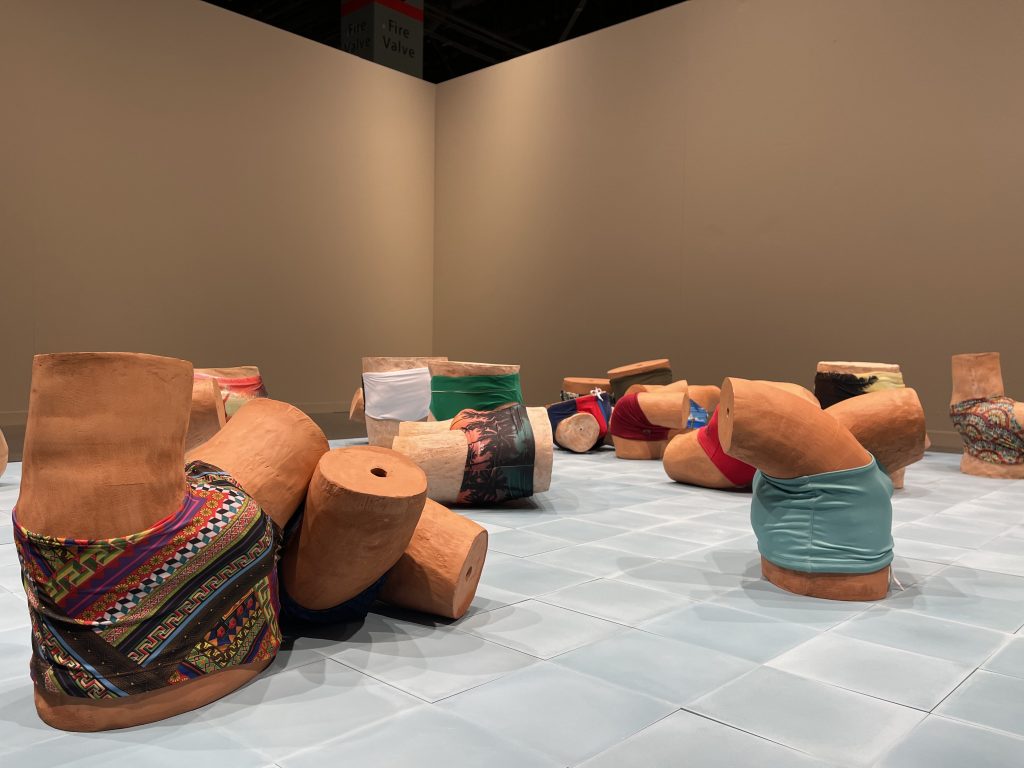Link About It: This Week’s Picks
Selfie performance art, a benefit auction for Syria, how our brains respond to music and more in our weekly look around the web


1. Hello! Selfie Miami
Like a real-life Tumblr page, artist, author and feminist Kate Durbin created “Hello!Selfie Miami,” a performance piece that occurred last week during Miami Art Week. The response to a man’s attack on Durbin’s piece about teen girls’s selfies manifested in a bunch of young women—dressed as mermaids and covered in Hello Kitty stickers—taking selfies for hours on end, with no interaction with their audience. Durbin calls it “passive aggressive performance art” and you can learn more via her interview with Dazed.
2. How Our Brains Synchronize with Musical Melodies
In their latest “60 Seconds of Science” video, Scientific American reveals that our brains’ rhythms are able to synchronize with musical melodies—leading to foot-tapping or head-bobbing with the beat—and that musical training can strengthen this ability. Researchers discovered this after measuring the brain activity of musicians and non-musicians as they listened to pitch changes in classical music, leading to the conclusion that musical training could possibly enhance linguistic ability. Read more on Scientific American.
3. Getting There: Isabel Marant
French designer Isabel Marant (who launched her independently owned label in 1990 under the name Twen before renaming it in 1994) invited NOWNESS to follow her daily routine and talk about authenticity, femininity, design and perfection. Beginning her day with a swim, Marant says that she is inspired by everything from music to women in the streets and explains, “I love femininity in a woman, but not when it’s sexualized.”
4. Elise Peterson’s #blackfolk Series Challenges
From Foxy Brown, Grace Jones, Sade and more, Brooklyn-based artist Elise R. Peterson adds photos of prominent black figures to fine art paintings in a collision of creative eras. The collage series, called #blackfolk, is Peterson’s way of opening up a conversation around gender, identity, sexuality, blackness and people who are marginalized. Speaking to the FADER, she explains, “The work […] evolved into not only placing us in these spaces, but of us as black people being put into these white worlds while dominating at the forefront.”

5. Silent Auction to Benefit Syrian Refugees
If you haven’t yet completed your holiday shopping, a silent auction called Shop For Syria is currently taking place on eBay that benefits Syrian refugees. Featuring products from COS to Diptyque, 3.1 Philip Lim, Rough Trade, even a personalized voicemail recording from Grammy Award-winning artist Sia and an out-of-print Aphex Twin vinyl box set from 2001, there’s something for everyone. Best of all, proceeds go to the UNHCR, who will use the funds to house and assist refugees in crisis. Head to eBay to shop the auction, which is taking place for roughly one more week.
6. The Difference Between Cultural Appreciation and Appropriation
Appreciating other cultures is necessary in understanding and connecting to the world around us, but appreciation can quickly become appropriation if you aren’t thinking. In the article “How to culturally appreciate and not culturally appropriate,” Dazed delineates the differences between the two—like getting henna done for Coachella or for your south Asian friend’s wedding—and explains why the difference is significant, and crucial to get right.
7. Bruce Gilden’s Powerful Portraits
In his latest book “Face,” photographer Bruce Gilden displays the sharp portraits of everyday people he encountered throughout his trips to America, the United Kingdom and Colombia. Chosen for their scrapes, scars, intense gazes and unapologetic demeanors, each subject stares into the camera, confronting viewers and capturing their attention. View more of Gilden’s powerful portraits at It’s Nice That.
8. The North Face Founder Douglas Tompkins Dies at 72
Douglas Tompkins—a non-stop adventurer, prolific conservationist and founder of The North Face (and Esprit)—died on Tuesday at the age of 72 while exploring the Patagonia region of southern Chile. Before founding The North Face, Tompkins spent his days hiking, skiing and climbing mountains—a life he later returned to after selling his stake in the company to focus on his conservation efforts. He spent most of his fortune on roughly 2.2 million acres of pristine lands, protecting them from development. Read more about his life at The New York Times.
Link About It is our filtered look at the web, shared daily in Link and on Twitter, and rounded up every Saturday morning.











